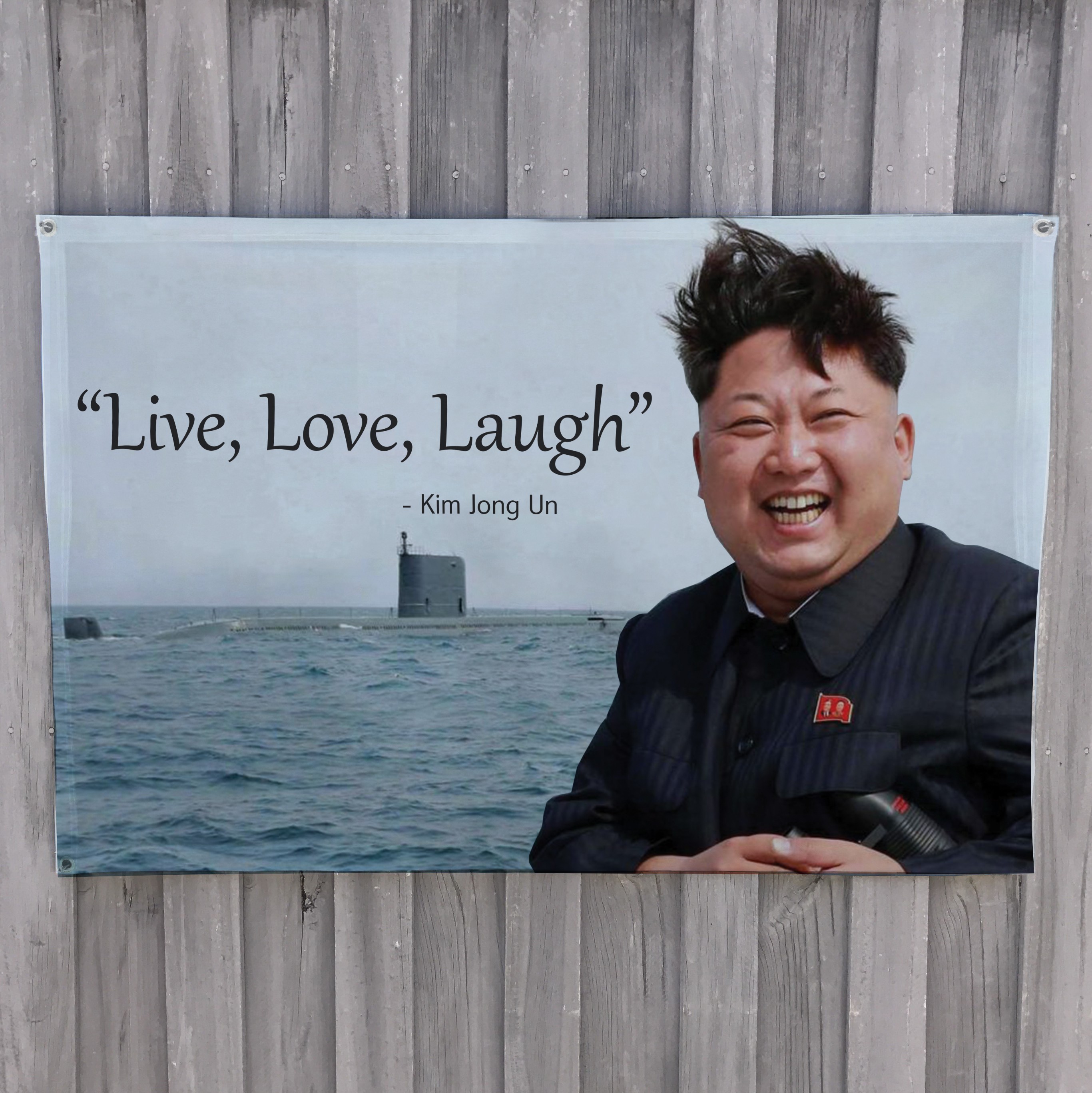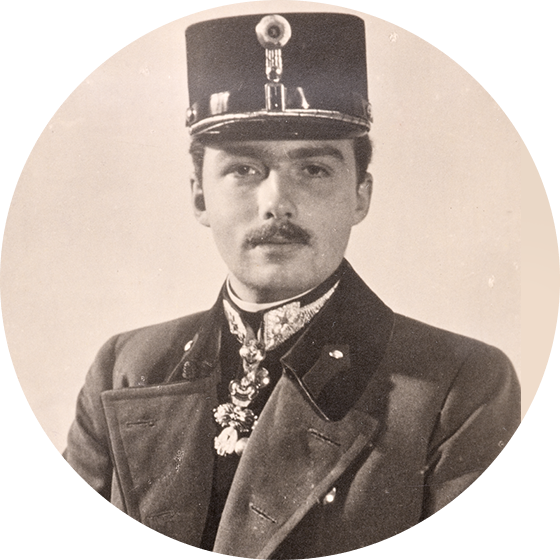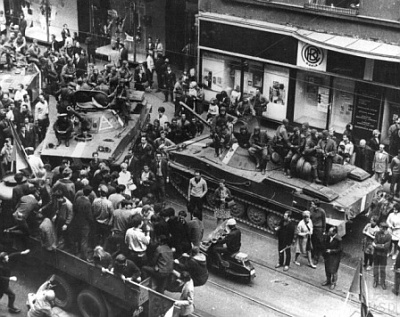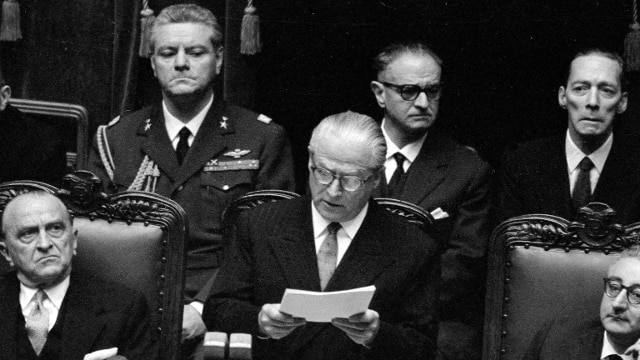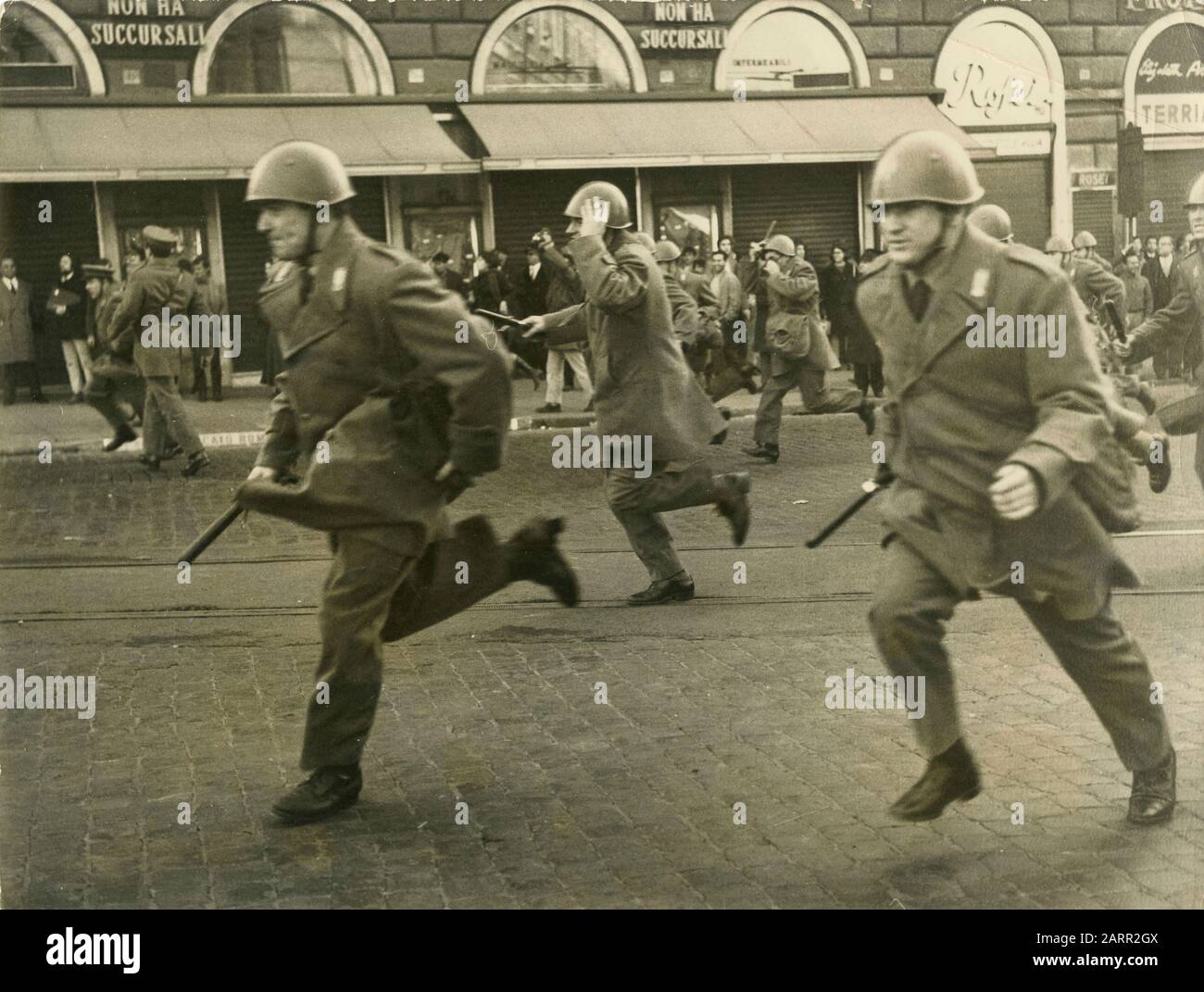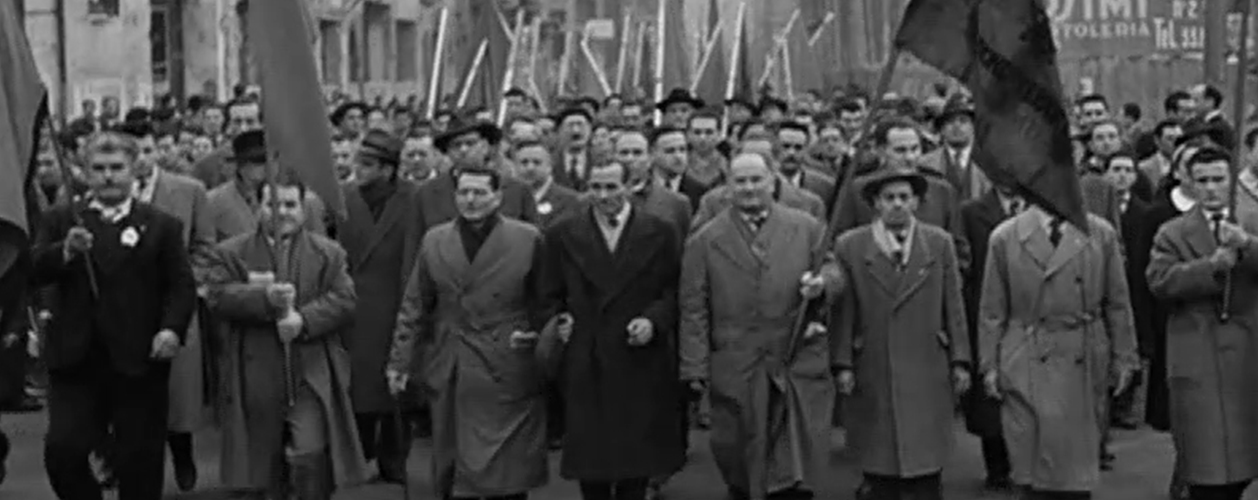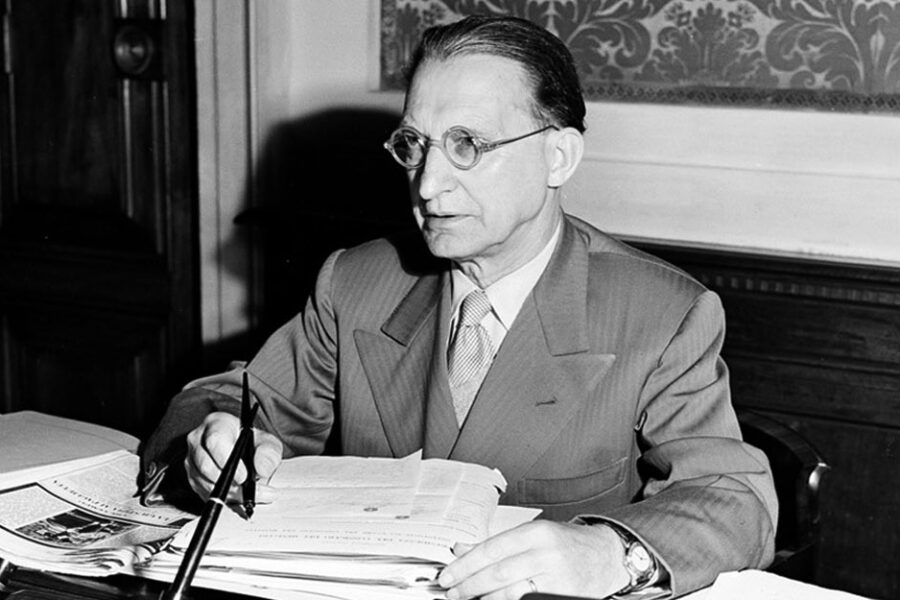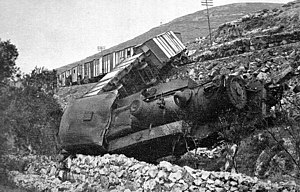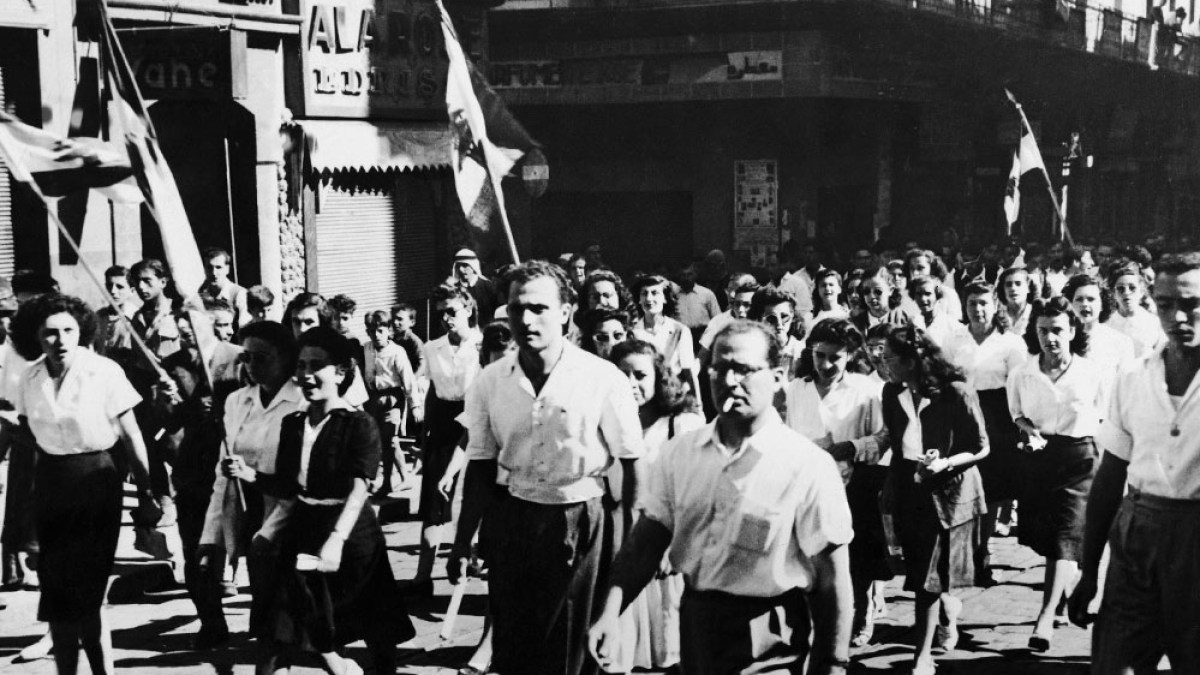Protesters in Corso Kossuth to ask for the abolition of the dictatorship to the death of Horthy
The news of Horthy's death, despite an attempt to keep it hidden by the military and political apparatus of the Kingdom of Hungary, leaked to the people.
The students of the University of Budapest, also led by elements of the radical left, took control of the university and, via radio, broke the news of the Admiral Regent's death to the entire nation.
Together with the news they gave the government a list of 16 points including liberalisation of the university, free elections and freedom of the press.
As soon as the radio announcement was broadcast, riots and protests broke out in every corner of the great kingdom. In the capital itself, a spontaneous demonstration erupted through the avenues of the centre. The military did not know what to do. Whether to repress the rebels or
Ferenc Szálasi enters the government palace in Budapest
Ferenc Szálasi the new regent according to the wishes of Horthy and the military took up residence in the Prime Minister's Palace three days after Horthy's death, and although he was determined to punish the rioters with violence, he received a telegram from Berlin, the famous
'Abwarten und sehen', in which the German imperial chancellery ordered Hungary to wait to use force.
Otto of Habsburg in uniform of the Hungarian army. The sovereign became the reference point of opposition to the military regime of Horthy and successors
Meanwhile, numerous supporters of the rightful monarch gathered around Otto. Son of King Charles and designated successor to the throne of Hungary (and technically of the archduchy of Austria, although under German pressure Charles had renounced it in 1920, to cede it to his cousins Lorraine).
A strong parliamentary group, formed by the socialist left and centre, opposed the military and called on the sovereign to take power himself and initiate reforms.
For the streets of Alba Iulia the Romanian subjects of the crown of Santo Stefano protest in favor of the independence of Transylvania and its union with Romania.
But if the situation was tense in Budapest, in the rest of the country it was about to erupt completely.
In Transylvania many people poured into the squares of the major cities, shouting 'Long Live Free Transylvania, Long Live United Romania', and in some cases the Hungarian armed forces opened fire on the demonstrators.
Croatian soldiers in Slavonia. The order given by Ante Pavelic is to defend national borders, if the royal army decides to cross the Drava river.
The biggest act of defiance came from the Ban of Croatia, Ante Palevic, who had practically turned Croatia into a personal fiefdom during the Horthy years.
Through the radio, he announced that Croatia not only did not recognise the students' appeal, but proclaimed Croatia's independence as a sovereign state under a national ruler. Palevic had identified the sovereign with Aimon of Aosta, but the latter was prevented from assuming the crown either by the national government, which had yet to recover from the War of the Alps, and from the German imperial government and did not want further chaos in Europe.
...to be continued.



